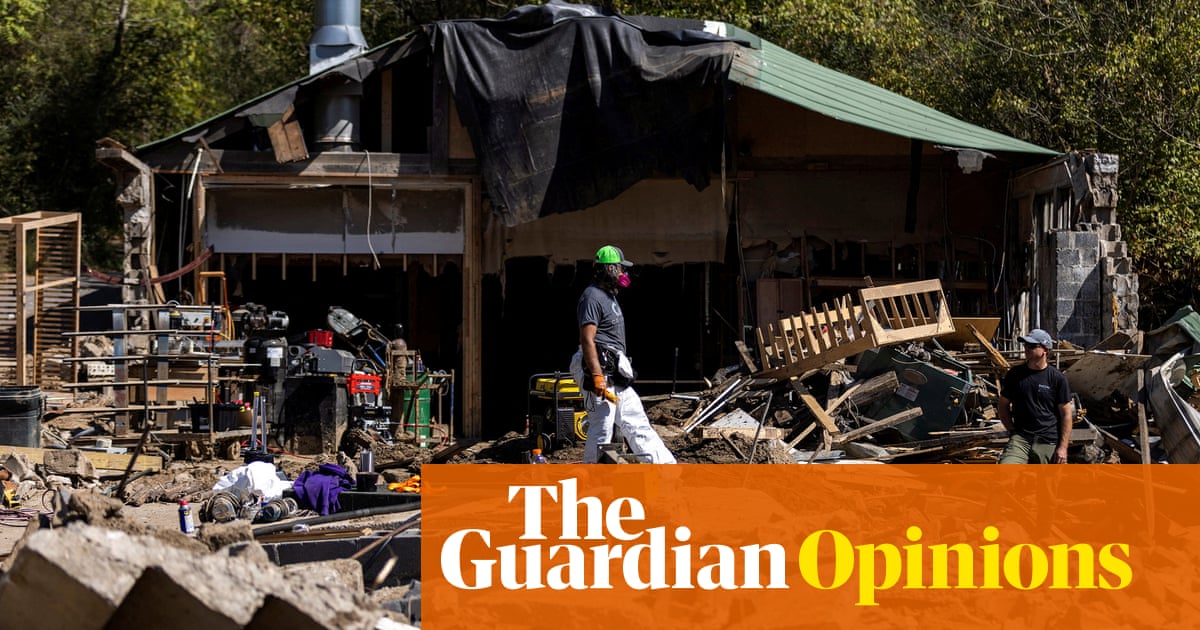When Hurricane Helene walloped North Carolina last fall, residents were hit by a second threat at the same time: the dire need for accurate information.
The loss of electric power amid the widespread flooding meant that people – especially those in isolated areas – were deprived of basic news. They needed to know about everything from road closures to the whereabouts of their family and friends to sources of drinkable water.
Blue Ridge PublicRadiostepped into the breach.
Residents used car batteries or crank-powered radios to listen to the station’s daily broadcast, as the editorial staff stayed on the air for long hours, sometimes sleeping on the floor of the Asheville-based newsroom.
It was one example of how public media serves its viewership, especially those in rural or small-town America, and especially at times of crisis.
But with the Trump administration’s draconianpush to “claw back”more than a billion dollars in already approved funds for public radio and television, that service is threatened as never before. It’s up to Congress to decide whether to agree to that demand or to allow the next two years of funding to stand.
“This would disproportionately harm rural areas and smaller communities, where public media really is a lifeline,” said Tim Richardson of PEN America, the non-profit organization that advocates for press rights and free expression.
It’s not only at times of crisis that public radio and TV make a difference. It’s every day, particularly in places that don’t have a lot of other news sources.
With the sharp decline of the local newspaper business over the past 20 years, many parts of America have turned into what experts refer to as “news deserts”. These are places that have almost no sources of credible local reporting.
As local newspapers have shuttered or withered – at a rate of more thantwo every week– news deserts have grown. The effects are sobering. People who live in news deserts becomemore polarizedin their political views and less engaged in their communities.
One of the foundations of democracy itself – truth – begins to disappear. People turn to social media for information and lies flow freely with nothing to serve as a reality check.
Right now, many small and rural communities that are on the brink of becoming news deserts do still have access to public media – particularly to National Public Radio’s network of member radio stations, which employ dedicated local reporters.
But the Trump administration’s new effort targeting public radio and television is a serious threat.
Katherine Maher, the chief executive of National Public Radio, was right when she warned this week that the loss of funds “would irreparably harm communities across America who count on public media for 24/7 news, music, cultural and educational programming, and emergency alerting services”.
With few exceptions, Democrats oppose the demand, but Republicans in Congress – as usual – are largely in favor of giving the president whatever he wants.
The House speaker, Mike Johnson, a loyal Trump acolyte, claims that news coverage from public radio and TV is biased, telling reporters that “there is no reason for any media organization to be singled out to receive federal funds”.
And Trump, showing his usual lack of restraint, has described NPR and PBS (public television) as “radical left monsters”.
That’s wrong. Public radio and television in America are notable for theirlackof bias; in fact, both organizations bend over backwards to present all viewpoints. The only prejudice they have is for traditional objectivity in their news gathering and presentation.
If there’s a more balanced and thoughtful news report on TV than the nightlyPBSNewsHour, I don’t know what it is.
There are excellent reasons to maintain this funding – primarily to give people the information they need to function in their lives and as citizens.
One Republican who has stepped outside the party line is the Alaska senator Lisa Murkowski. She has reiterated her longstanding support for public broadcasting in recent days, arguing in an opinion piece in theFairbanks Daily News-Minerthat the proposed cutbacks would be devastating to communities in her state.
“What may seem like a frivolous expense to some has proven to be an invaluable resource that saves lives in Alaska,” Murkowski wrote.
In the past, when federal funding for public media has come under fire, Congress has repelled the threats.
But Richardson is far from certain that that will be true this time, given Trump’s iron grip on the Republican party and its weak-willed elected officials.
“We’re in a different situation, a more dangerous moment now,” Richardson told me.
But there is an escape hatch. Republican officeholders do have to listen to their constituents or run the risk of being voted out.
Voters – especially those in rural areas, small towns and red states – should let their elected representatives know that they need public radio and television to continue. That public media may even be their lifeline.
Margaret Sullivan is a Guardian US columnist writing on media, politics and culture
